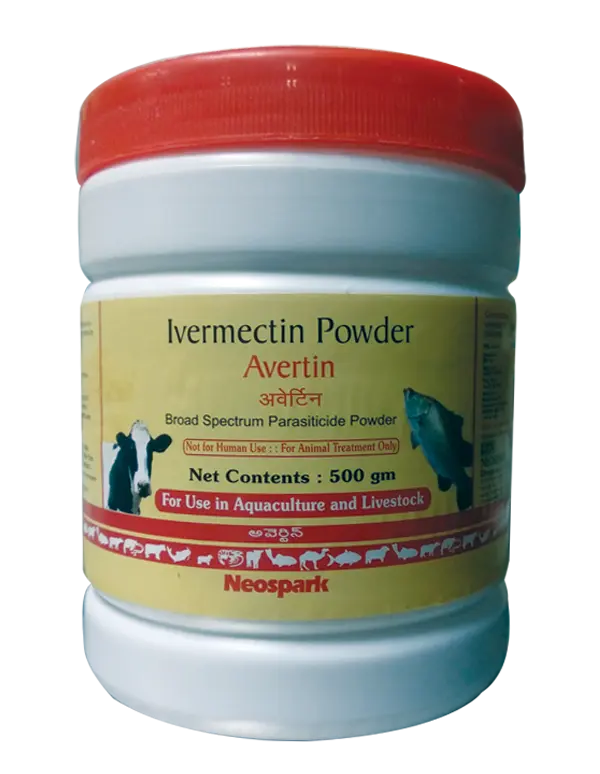In fish farms a few forms of copepods - Argulus sp., Lernaea sp., visible to the naked eye are causing severe disease problems.
Copepods are crustaceans found in both marine and freshwater environments. Most are planktonic, while others are found living in the sediments. Some species are specialized to live as parasites, on or in host organisms at some stage in the lifecycle, although one or more stages are free-living as plankton in the water, usually during the early stages of development. Fish lice are the common term used for one group of parasitic copepods which occur naturally on fish world-wide.
While low numbers of fish lice cause only minimal damage to the host, high numbers can result in severe effects and even death of the host fish. The primary infestation by these parasites often provides a congenial environment for secondary invaders like bacteria and fungus.
Fish Lice - Potential problems:
Direct damage: Fish lice may cause localised areas of damage around the attachment point. Feeding activity by adult and pre-adult fish lice results in erosion of the protective mucus and skin layers with loss of scales. In severe cases, there is haemorrhage and underlying muscle may be exposed. Where deep lesions have been established adult lice may feed on host blood.
Indirect damage: Caused by fish scraping or jumping against nets in response to the irritation caused by fish lice.
Secondary infections: The protective layer of mucus may be lost through lice grazing on the skin and this maybe associated with secondary bacterial infections. Bacteria have been recorded in the guts of lice and it has been suggested that lice may transmit bacterial diseases and viruses.
Stress: Reduces immunity and resistance of fish to other infections.
Osmoregulatory failure in saline waters: Damage to the skin results in changes in the fishes blood chemistry so they are no longer able to maintain salt and water balance with the environment. This also causes stress which may further reduce resistance of the fish to disease.
Loss of appetite and reduced growth: Fish that are heavily affected by fish lice show a reduced feed response and this may have a direct effect on feed conversion and fish growth rates.
Mortality: May result from any of the above factors causing heavy losses to the fish farmers.
Treatment and Control of fish lice:
Long-term protection is now possible using AverTin, which has a long duration of efficacy and can protect fish from new outbreaks long after the medication period has been completed.
AverTin binds selectively and with high affinity to glutamate-gated chloride ion channels, which occur in copepod (invertebrates) nerve and muscle cells. This leads to an increase in the permeability of the cell membrane to chloride ions with hyper polarization of the nerve or muscle cell, interferes with neurotransmission disrupting nerve cells causing paralysis and death of the parasite.
AverTin is active in controlling various life-cycle stages of all external parasites including gill parasites and many nematodes and flukes. External treatment can also give by using CatlOx Plus or SilvanOx (Neospark) as an oxidizer which controls fish lice through oxidation by the formation gas bubbles in fish lice.
Streptomyces avermitilis, an actinomycete was isolated from Japanese soil, which produces a class of compounds known as Avermectin B1a, The AverTin. Although structurally similar to macrolide antibiotics, it is devoid of antibacterial activity.
Due to its broad spectrum of activity, it is found to be affective in many conditions to control copepods, nematodes and flukes in fishes.
Usage instructions:
Fish : 200-250 gm/ton of feed or 10gms for 1 ton of live fish.
For Prevention
Use AverTin once every 3 months according to prevailing conditions or as advised by Aquaculture consultant.
For Treatment:
Use AverTin continuously for 4 days and repeat after every 3 months or depending on the condition of infestation.
Application Procedure:
Mix thoroughly 200 - 250 gms of AverTin powder in 50 kg of feed to make a Premix. Then Remix the Premix thoroughly with one ton of feed before feeding.
Composition: Ivermectin BP 1% W/W
Presentation: 500 grams and 1.0 kg
For Servicing Aquaculture Industry (Including Academic and Research Institutions, Universities etc.)
